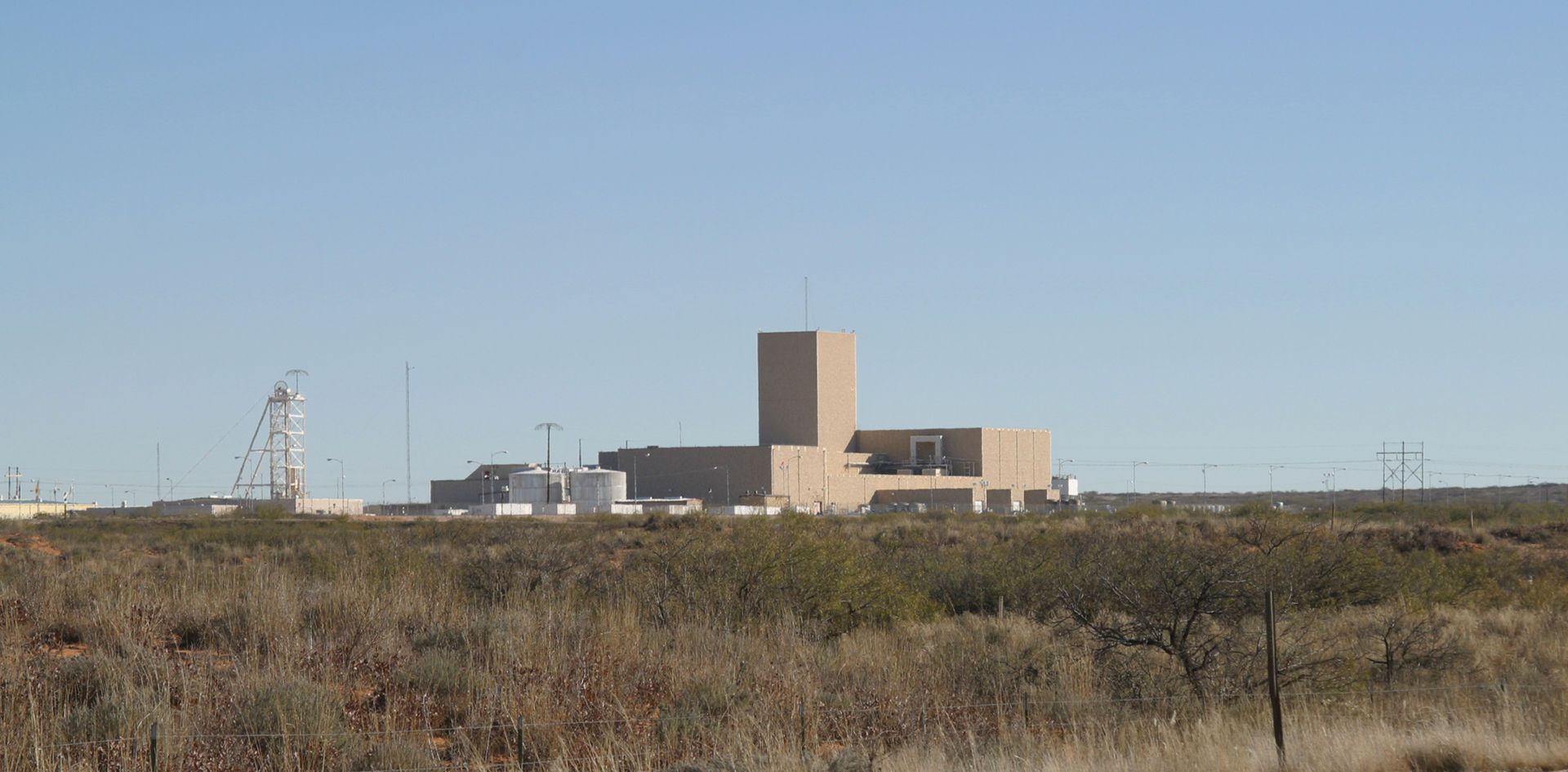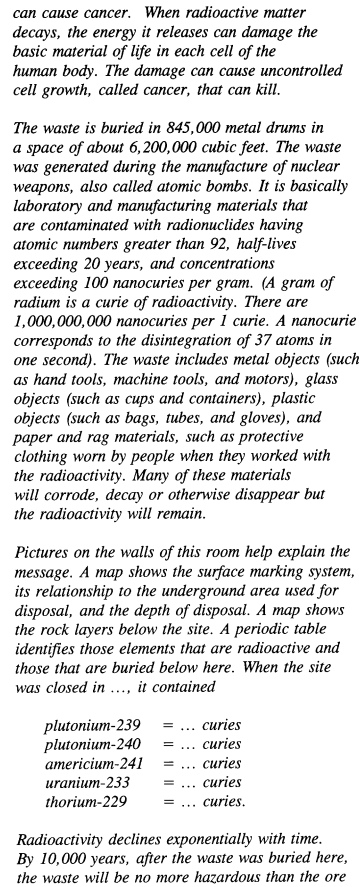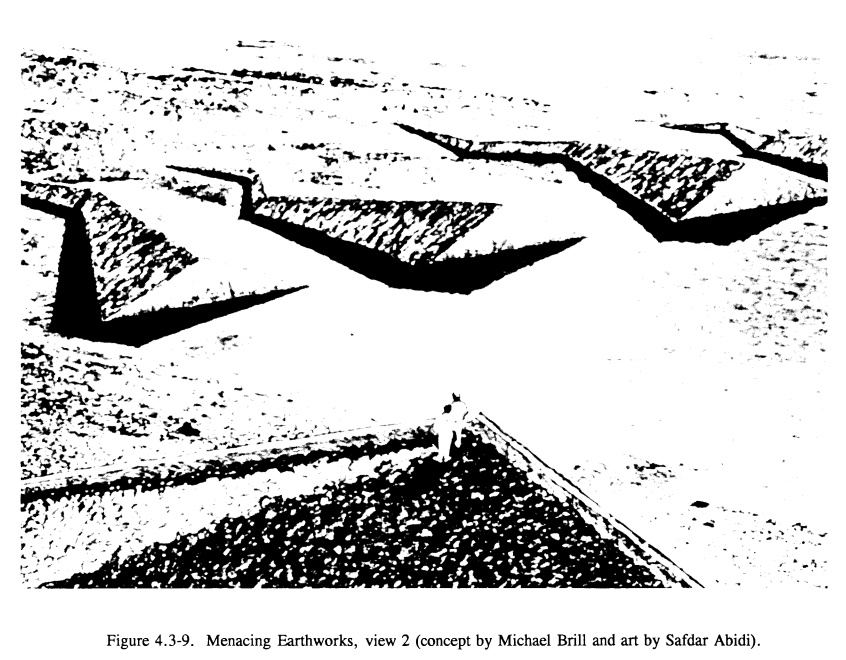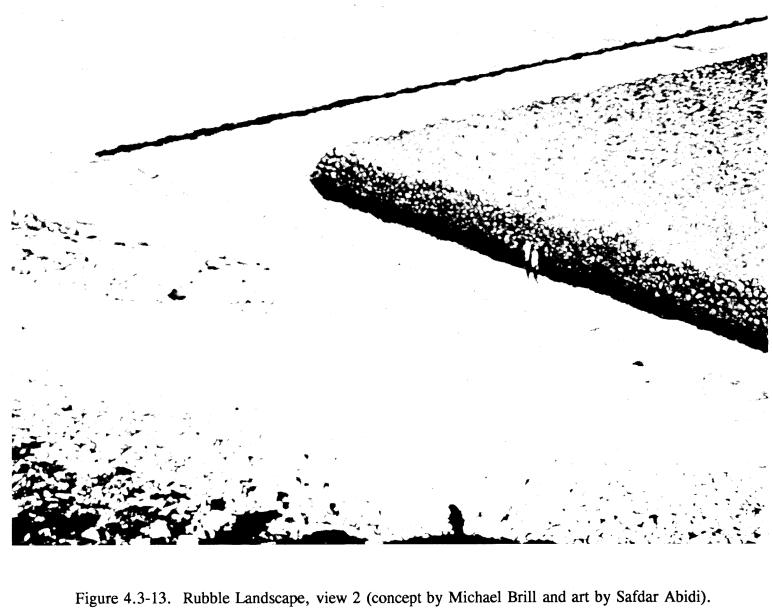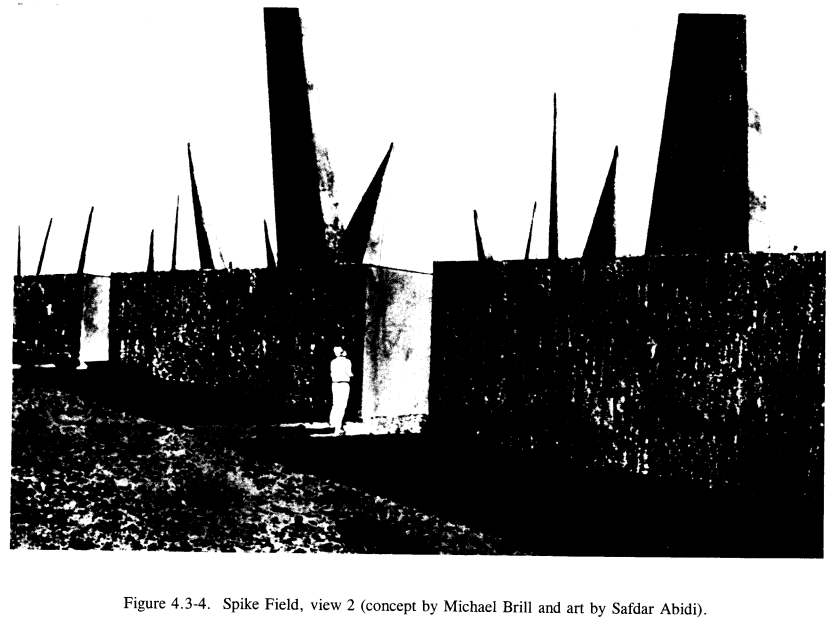"This place is not a place of honor.
No highly esteemed deed is commemorated here.
Nothing valued is here.
What is here is dangerous and repulsive to us.
This place is a message.
This message is a warning about danger."
I.
The past is murky. Very little survives today from the world that was, so we have to act like detectives, piecing together clues and interpreting patterns on vases, riches buried with kings, or crumbled rock foundations. Only the lucky and the durable survive the passage of time, and these clues are all archaeology has to work with. It is as much an art as it is a science.
Sometimes I find it interesting to think about what future humans might think if, one day, thousands of years in the future, they dug up things we find ordinary today. Perhaps they'll dig up tanning beds and think we roasted our people to death as punishment, or find breast implants on a skeleton and assume they were some sort of necklace and status symbol. CDs and computers would be totally incomprehensible to a society without them. Who knows how they might interpret this:

Even I have no idea what the hell it is and I'm from this time.
It's not often that we build things with the intent of them being understood by the people of the future. Time capsules are one example, or the images sent out on the Voyager Golden Record, which tried to explain the history of humanity through photos of human life and the universal language of math.
II
Humanity today is generating nuclear waste that will stay toxic for thousands of years. This presents a unique challenge to the people tasked with safely disposing of it. How do you leave a message that will last and be understood for thousands of years? How do you make sure it is understood by humans of a different, not-yet-existing language, or aliens? How do you make sure a structure holding nuclear waste lasts long enough to keep it safe? Even one of our oldest man-made structures, Stonehenge, is less than 4000 years old. Ten thousand years is long enough that anything could happen; multiple wars could be won and lost, civilisations can rise and fall, and the events of today will likely be long forgotten.
It's a problem that needs tackling, and a team of scientists put together by the US Department of Energy are working on a plan to keep the people of the future safe from the people of today. The amount of thought and work that went into it is incredible. Not only are they designing something that has to stand the effects of the elements, but there are other unique challenges, like somehow making sure that people don't tear it down or use it for other purposes. Making the facility durable isn't the hardest part - it's about making the facility a message.
This place is a message...and part of a system of messages...pay attention to it!
Sending this message was important to us. We considered ourselves to be a powerful culture.
This place is not a place of honor...no highly esteemed deed is commemorated here...nothing valued is here.
What is here is dangerous and repulsive to us. This message is a warning about danger.
The danger is in a particular location...it increases toward a center...the center of danger is here...of a particular size and shape, and below us.
The danger is still present, in your time, as it was in ours.
The danger is to the body, and it can kill.
The form of the danger is an emanation of energy.
The danger is unleashed only if you substantially disturb this place physically.
This place is best shunned and left uninhabited.
III
One of the scientists working on the project was an anthropologist, David B. Givens, who developed a system of four information levels, each communicating the message at a different granularity:
- Level I: Rudimentary Information: "Something man-made is here"
- Level II: Cautionary Information: "Something man-made is here and it is dangerous"
- Level III: Basic Information: Tells what, why, when, where, who, and how
- Level IV: Complex Information: Highly detailed written records, tables, figures, graphs, maps and diagrams
In addition to Givens acting as anthropologist, the team covered a range of fields, including an astronomer, an archaeologist, an environmental designer, a linguist and a materials scientist.
The entire site must be experienced as an integrated system of mutually reinforcing messages, and designed accordingly.
Level 1
The first problem to tackle is the most broad level of the message: "Something manmade is here." This is communicated not by words but by the very structure of the site.
Their size is set so that sand dunes are unlikely to cover all of them entirely at the same time. Instead, the wind will leave dunes streaming behind the berms and create an even larger marker.
Use a system of markings that utilizes the whole site as an enormous mark, and that includes: smaller markers; high points to climb from which to view the entire site; walls and places to be in that co-locate viewers with messages...an organized environment.
Level 2
"Something man-made is here and it is dangerous." This is communicated both through basic messaging in the form of symbols and writing, and again, the structure itself.
The shape sets the tone for the entire landscape -- non-natural, ominous, and repulsive
The use of communication technology cannot bypass the problem of the certain transformation and succession of cultures, but use of fundamental and enduring psychology can.
Level 3
Level 4
IV
Notice that the faces accompanying the messages above are not angry or stern faces, like you would traditionally see on burial sites. That's because, again, the goal here was to keep people out at all costs; they include faces of sickness and horror, appealing to any potential intruder's sense of self protection, instead of implying the structure might be protecting treasures from thieves.
The element of durability is pretty important for a structure that needs to last ten thousand years. I'm not talking about structural durability, even today we can easily build something that will survive thousands of years if left alone. The problem is other people. How do you stop other people destroying it for the land, or stealing the materials for reuse?
Every care has been taken to make sure this site stands the test of time. The walls used to display these messages are themselves thoughtfully constructed - making sure not to build them in the shape of an obelisk or any other honorific form, building them in a curved slab to make it difficult to reuse the message stones, and even building a second sheltering wall, as you can see below.
Each component of the marking system should be made of material(s) with little intrinsic value. The destructive (or recycling) nature of people will pose a serious threat to the marking system.
V
It's clear that designing a structure that fits all of the above criteria is a pretty massive task. Some of the designs they came up with are shown below, with commentary from the report.
Black Hole
A masonry slab, either of black Basalt rock, or black-dyed concrete, is an image of an enormous black hole; an immense nothing; a void; land removed from use with nothing left behind; a useless place. It both looks uninhabitable and unfarmable, and it is, for it is exceedingly hot part of the year. Its blackness absorbs the
desert’s high sun-heat load and radiates it back. It is a massive effort to make a place that is fearful, ugly, and uncomfortable.
Forbidding Blocks
Stone from the outer rim of an enormous square is dynamited and then cast into large concrete/stone blocks, dyed black, and each about 25 feet on a side. They are deliberately irregular and distorted cubes. The cubic blocks are set in a grid, defining a square, with 5-foot wide’’streets” running both ways. You can get “in” it, but the streets lead nowhere, and they are too narrow to live in, farm in, or even meet in. It is a massive effort to deny use. At certain seasons it is very, very hot inside because of the black masonry’s absorption of the desert’s high sun-heat load. It is an ordered place, but crude in form, forbidding, and uncomfortable.
Menacing Earthworks
Immense lightning-shaped earthworks radiating out of an open-centered Keep. It is very powerful when seen both from the air and from the vantage points on the tops of the four highest earthworks, the ones just off the corners of the square Keep. Walking through it, at ground level, the massive earthworks crowd in on you, dwarfing you, cutting off your sight to the horizon, a loss of connection to any sense of place. Reading walls are strewn between the earthworks, encountered before the Keep is entered.
Rubble Landscape
A square outer rim of the caliche layer of stone is dynamited and bulldozed into a crude square pile over the entire Keep. This makes a rubble-stone landscape at a level above the surrounding desert, an anomaly both topographic and in roughness of material. The outer rim from which rubble was pushed inwards fills with sand, becoming a soft moat, probably with an anomalous pattern of vegetation. This all makes for an enormous landscape of large-stone rubble, one that is very inhospitable, being hard to walk on and difficult to bring machinery onto. It is a place that feels destroyed, rather than one that has been made.
Spike Field
Spikes Through Grid
Landscape of Thorns
Danger seems to emanate from below, and out of the Keep in the form of stone spikes, concrete thorns, and zig-zag earthworks emanating from the Keep. The shapes suggest danger to the body... wounding forms, like thorns and spikes, even lightning. They seem active, in motion out and up, moving in various directions. They are irregular or non-repetitive in their shape, location and direction.
They seem not controlled, somewhat chaotic. In the three designs that use “fields” of spikes or thorns, these spikes or thorns come out of, and define the Keep, so the whole area that is dangerous to drill down into is so marked.
VI
Whether this will go ahead is another matter, everything in this post is hypothetical, just a 'no-holds-barred' preliminary report. Time will tell whether we manage to protect the future from the present, although we won't be around to find out.
The note the authors left at the end of the report is pretty telling:
The very exercise of designing, building, and viewing the markers creates a powerful testimony addressed to today's society about the full environmental, social, and economic costs of using nuclear materials. We can never know if we indeed have successfully communicated with our descendants 400 generations removed, but we can, in any case, perhaps convey an important message to ourselves.

References
http://prod.sandia.gov/techlib/access-control.cgi/1992/921382.pdf
http://www.wipp.energy.gov/picsprog/articles/wipp exhibit message to 12,000 a_d.htm
